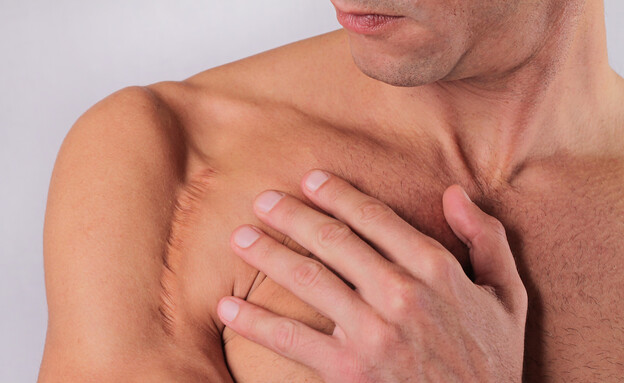To fully understand the skin’s restorative properties, we addressed a number of questions on the subject to Prof. Yossi Haik, a specialist in plastic and aesthetic surgery, director of the Department of Plastic Surgery and the National Center for Intensive Care for Burns in Sheba.
Prof. Haik, medically, what is a scar? What happens to the skin when it is scarred?
“A scar is a process of remodeling (re-shaping) of an incision or imperfection of the skin. When an acute injury occurs, our skin knows how to heal on its own and the scar that forms instead, is a completion of the skin infrastructure, of the deep layer and completion of the skin coating. “Healing the skin”, says Prof. Haik and explains that the scarring process – remodeling (redesign) – begins immediately after the wound heals and up to about two years from the appearance of the wound and this is the process of completing the wound scarring and completing its healing.
Prof. Haik explains that about 6 weeks after the injury, the healing skin naturally achieves a strength of 80% of its final strength and at the end of the scarring process, after about two years, it will reach about 85% of the original strength of the skin. Hence, this area will be left as a weak point in the skin.
“For these reasons, it is important to start treating the scar itself about a month after the healing and healing of the wound and no less, so as not to weaken the scar and the natural healing process beforehand. Says Professor Haik.
Prof. Haik emphasizes that there is no way to predict the formation of the scar and its final shape and it actually depends on the body itself, its history, and other conditions such as skin color, diabetes, blood supply, metabolic diseases, skin problems, immune problems, local stress, lack of proper treatment. Infection, bleeding and more.
How do you know if an external wound or surgery will leave a scar for a long time?
“There is no surgery or incision that does not leave a mark or scar. The nature of the scar is unpredictable, but there are technical ways to treat and minimize the risk of a scar that is not beautiful or over-scarring,” says Prof. Hayek, adding. “To reduce, prevent and treat an abnormal scar. It is important to emphasize again that no doctor can predict the nature of the scar that will form because, as mentioned, it depends on many variables and individuals.”
Are there external factors that can positively or negatively affect scars?
Prof. Haik enumerates the effects – for better or worse – on skin scarring: “Good ‘scarring can be affected by the level of stress on the scar, cutting in the right direction, concealment, avoiding the sun with at least 30SPF sunscreen, and lubricating the area. Sheets can be added “Silicone gel, medical tattoo, make-up, lasers or microneedling. There are even more aggressive treatments such as steroid injections, local chemotherapy injections, radiation and freezing of the scar but it is only in keloid scars, which continue to grow,” he says, adding: “Stress on the scar, lack of local hygiene or infection, personal or genetic characteristics of the person, sun that can create hypo or hyper-pigmentation that can change the skin tone (which is also a type of scar), all of which can adversely affect the normal scarring of an injury.”
It is important for Prof. Haik to emphasize that in a ‘normal’ scar, under the right conditions, there will be a normal recovery in a completely natural course and the scar will turn from a normal red to the color of normal skin within a few months. “The healing process is an inflammatory process and therefore the scars are sensitive or red, hot or swollen during recovery but it is a natural stage of healing and scarring,” he says.
If there is already a scar, can it be removed?
“It is possible to blur, improve, reduce but it is not possible to completely remove a scar,” says Prof. Haik.
“The more scar treatments we do – local pressure, gel and silicone sheets, steroid injections, chemotherapy injections, a specific laser for scar treatment, freezing or radiation, there is a better chance of getting a scar result. A month or more from the date of wound healing. “Get professional advice from the attending physician or an expert in the field, regarding appropriate treatment,” says Prof. Haik.
When it comes to old scars, it is possible to slightly blur or enhance the maran using a laser, which may be able to reorganize them but the scar can not be completely removed. “It is important to emphasize that treatment can only take place when the scar is still active. When the scar returns to its original color and has already stabilized, it will be very difficult to treat,” he explains, adding that only in some cases, In skin thrillers “but this is only a limited treatment and for very specific and complex cases,” concludes Prof. Haik.
It should be remembered that in any case, what is written here is not a medical recommendation for this or that scar and any question should be directed to a plastic surgeon or a specialist doctor who specializes in the field.
